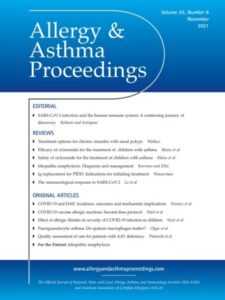
Photo from archive.org
Hypersensitivity reactions (HSR) to targeted biologic agents present as immediate reactions during infusion or as delayed reactions (after one or more exposures). The new classification includes phenotypes, endotypes, and biomarkers.… Click to show full abstract
Hypersensitivity reactions (HSR) to targeted biologic agents present as immediate reactions during infusion or as delayed reactions (after one or more exposures). The new classification includes phenotypes, endotypes, and biomarkers. Phenotypes include immediate type I (immunoglobulin E [IgE] or non-IgE mediated), cytokine release, mixed (type I/cytokine), and immune complexes type III (IgG mediated) reactions as well as delayed type IV reactions. Endotypes include IgE or non-IgE mediated mast cells/basophils activation with elevated serum tryptase and T cells values as well as macrophages, which lead to cytokine production, e.g., interleukin 6. A skin test is a valuable tool in evaluating HSRs to biologics; however, its predictive value depends on the type of reaction and the monoclonal antibody. Desensitization is a new approach to safely reintroduce biologics when they are first-line therapies, and it is available for immediate and delayed reactions. Research is needed to further understand the mechanisms of reactions to monoclonal antibodies and their management.
Journal Title: Allergy and asthma proceedings
Year Published: 2017
Link to full text (if available)
Share on Social Media: Sign Up to like & get
recommendations!